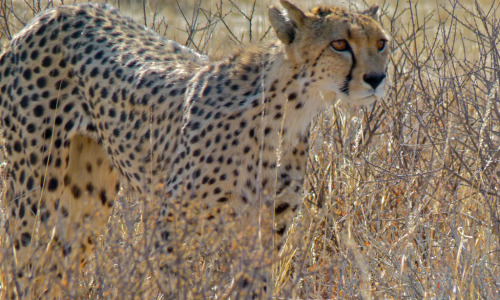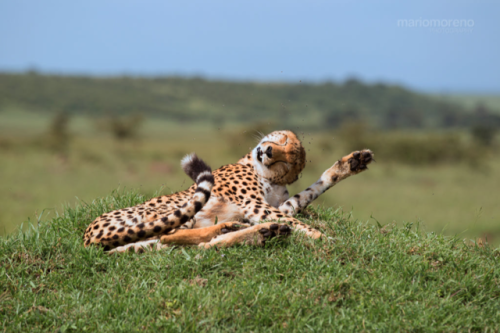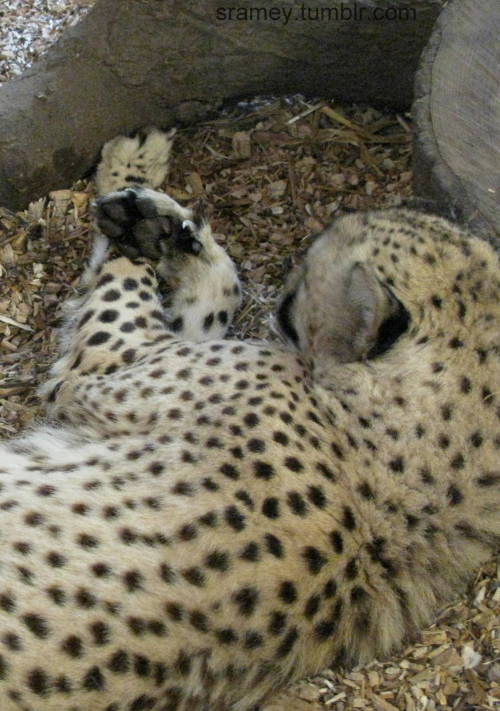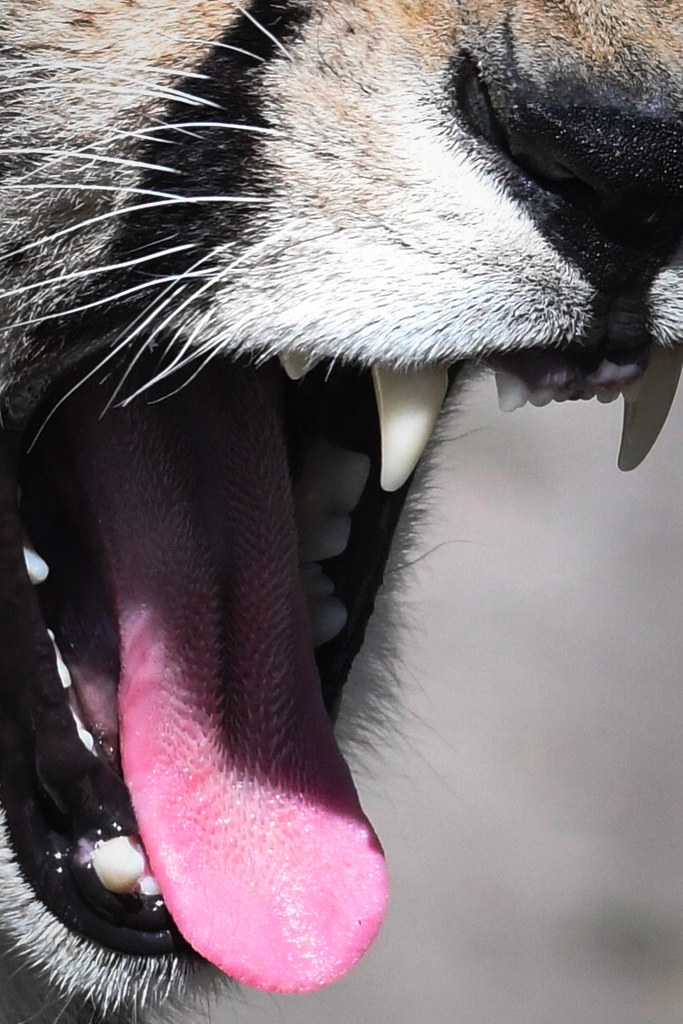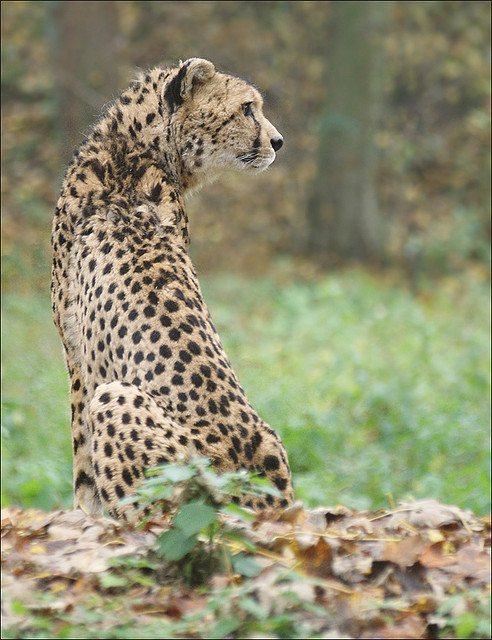#acinonyx jubatus
Motorboat purrs from Blanca
What a gorgeous cheetah!
Of Note: Purring and roaring are mutually exclusive, so lions,tigers,leopardsandjaguars are all incapable of purring, while every other cat can purr but not roar.
Cheetahs (Acinonyx jubatus) is the most primitive of all big cats. The don’t act like the rest of the cats. While most of the big cats are ambush predators (waiting for prey to come close and surprising it), cheetahs chase their prey. They are famous for their speed (which are estimated to be as fast as 128km/h), but can only keep that speed for short amounts of time. They stalk close to their prey, and then rush it. Their feet help them run, since they have semi-retractable claws. Most cats have fully retractable claws, able to tuck them away into the pads of their feet so they can move silently. Cheetah claws are always out. This helps them gain traction as they’re chasing down their prey.
Post link
Cheetah 2byFoto Martien on Flickr.
Via Flickr:
Cheetah in the Safaripark of Burgers Zoo in Arnhem, the Netherlands.
The cheetah (Acinonyx jubatus) is an atypical member of the cat family that is unique in its speed, while lacking climbing abilities. Therefore it is placed in its own genus, Acinonyx.
It is the fastest land animal, reaching speeds between 112 and 120 km/h in short bursts covering distances up to 460 m, and has the ability to accelerate from 0 to 110 km/h in three seconds, faster than most supercars.
The adult cheetah weighs from 40 to 65 kg. Its total body length is from 115 to 150 cm, while the tail can measure up to 85 cm in length. Males tend to be slightly larger than females and have slightly bigger heads. The cheetah’s chest is deep and its waist is narrow. The coarse, short fur of the cheetah is tan with round black spots measuring from 2 to 3 cm across, affording it some camouflage while hunting. There are no spots on its white underside, but the tail has spots, which merge to form four to six dark rings at the end. The cheetah has a small head with high-set eyes.
There are several geographically isolated populations of cheetah, all of which are found in Africa or Southwestern Asia. The cheetah likes to live in an open biotope, such as semi-desert, prairie, and thick brush, though it can be found in a variety of habitats.
Info:en.wikipedia.org/wiki/Cheetah
Post link
Camouflaged cheetahbyFoto Martien on Flickr.
Via Flickr:
Cheetah in the Safaripark of Burgers Zoo in Arnhem, the Netherlands.
The cheetah (Acinonyx jubatus) is an atypical member of the cat family that is unique in its speed, while lacking climbing abilities. Therefore it is placed in its own genus, Acinonyx.
It is the fastest land animal, reaching speeds between 112 and 120 km/h in short bursts covering distances up to 460 m, and has the ability to accelerate from 0 to 110 km/h in three seconds, faster than most supercars.
The adult cheetah weighs from 40 to 65 kg. Its total body length is from 115 to 150 cm, while the tail can measure up to 85 cm in length. Males tend to be slightly larger than females and have slightly bigger heads. The cheetah’s chest is deep and its waist is narrow. The coarse, short fur of the cheetah is tan with round black spots measuring from 2 to 3 cm across, affording it some camouflage while hunting. There are no spots on its white underside, but the tail has spots, which merge to form four to six dark rings at the end. The cheetah has a small head with high-set eyes.
There are several geographically isolated populations of cheetah, all of which are found in Africa or Southwestern Asia. The cheetah likes to live in an open biotope, such as semi-desert, prairie, and thick brush, though it can be found in a variety of habitats.
Info:en.wikipedia.org/wiki/Cheetah
Post link

